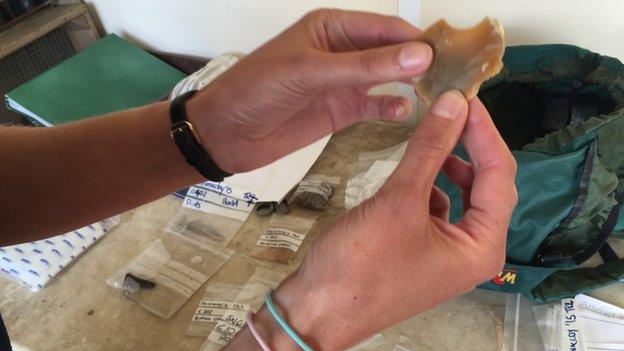Belfast hills dig reveals historical gems
- Published

Among the items that have been found was the foundations of a house dating to the 1300s
From the neolithic to the medieval period, a host of historical artefacts have been hiding in the Belfast hills.
But now, for the first time, the dirt has been dug up by archaeologists eager to find out more about our ancestors.
Perhaps the most interesting find has been the foundations of a house dating back to the 1300s.
The archaeologists said it is a hugely significant find, opening another door into the past and allowing us to learn more about how people used to live.
A flint scraper, used by people living more than 3,000 years ago, was also found. It would have been used to scrape animal skins, and as a sort of tool for eating food.
The dig was organised by the Belfast Hills Partnership and Queen's University Belfast. First-year archaeology students were given their first chance to explore an ancient site.

Also discovered was a flint scraper used by people living more than 3,000 years ago
Some of those taking part said it had made them even more eager to follow this career path.
The dig has been going on for several weeks, but at the end of next week it will all be covered up again and restored to how it was before the archaeologists dug their trowels into the previously untouched land.
Lizzy Pinkerton from the Belfast Hills Partnership said they want to make sure it remains in good condition. They will now analyse all of the data and artefacts they have found.
It is unclear how many other potted sites like the one in Slievenacloy are waiting to be explored all over Northern Ireland, but the enthusiastic archaeologists say they are determined to find out.

First-year archaeology students were given their first ever chance to explore an ancient site

Pieces of pottery have also been found during the dig